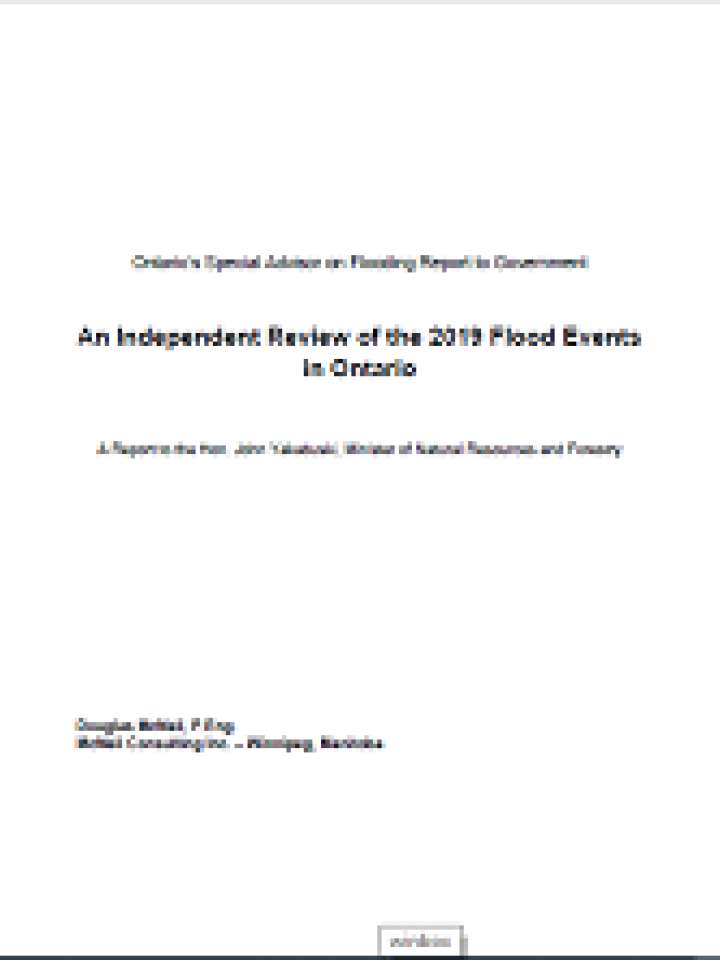Independent review of the 2019 flood events in Ontario
Ontario has a long history of taking actions to keep people and property safe from the impacts of flooding through land use planning policies and mitigative activities. The development of the modern floodplain policy in Ontario, the watershed approach, the conservation authority model, and the flood standards have been extremely effective at reducing flood risks, especially in new greenfield development areas.
However, during the spring of 2019, heavy rains paired with melting snow and a sudden temperature increase led to devastating flooding across many areas throughout northern and southern Ontario. Emergency declarations were made by 23 municipalities and one First Nation, with significant flooding impacting households, commercial properties, roads and other key infrastructure, such as bridges. Emergencies were first declared starting in early April and lasted through July in many cases.
Even through the fall and heading into winter, the Great Lakes continue to experience high-water levels that have been underway since early 2017, and many people and properties continue to be at risk. Based on an analysis of the information available for all of the systems that experienced flooding in 2019, nothing points to human error or the negligent operation of water control structures as the cause of the flooding.
The sheer amount of water (snow and rainfall) on the landscape directly contributed to the flooding. Measures taken by water managers everywhere were effective in reducing the magnitude of flooding and associated damages throughout the drainage basins.
Explore further
